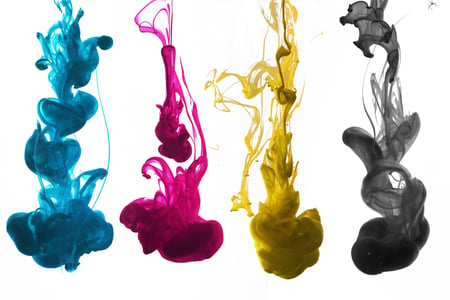Whether you work with printed electronics, touch displays, or any of the number of applications working with conductive inks, coatings, paints and pastes, viscosity is one of the key parameters to development of your manufacturing processes. The complexity of printing and coating technologies has motivated a rapid growth of the conductive inks industry. To meet the market demands when it comes to creating high quality inks, efficient, highly accurate and fast characterization methods are required. Conventional viscometers are often unable to fully characterize complex fluids (i.e. they are not able to measure viscosity as a function of shear rate or extensional properties) due to the inability to reach even the minimum shear rate requirements when it comes to measuring inks. On the other hand, rheometers are limited to relatively low (<10,000 1/s) deformation rates. Our microfluidic-based VROC® (Viscometer/Rheometer On a Chip) technology overcomes these limitations.
Conventional viscometers are often unable to fully characterize complex fluids (i.e. they are not able to measure viscosity as a function of shear rate or extensional properties) due to the inability to reach even the minimum shear rate requirements when it comes to measuring inks. On the other hand, rheometers are limited to relatively low (<10,000 1/s) deformation rates. Our microfluidic-based VROC® (Viscometer/Rheometer On a Chip) technology overcomes these limitations.
RheoSense viscometers are able to fully characterize the flow curves (viscosity vs shear rate) of complex fluids for shear rates ranging from 0.5 to 1,400,000 1/s. Additionally, we offer measurements of extensional viscosity and temperature control from 4°C to 105°C. Accurate measurements of shear and extensional viscosity at the deformation rates and temperatures relevant for the fabrication processes are essential to understand the subtleties of the different printing and coating technologies.
VROC® powered instruments, provide a solution to the challenges of conventional technologies. The high accuracy and repeatability over a wide range of deformation rates make our systems Simply Precise™ at a fraction of the sample volume and testing time!
Over the last few months, RheoSense has released a number of applications related to conductive inks. Our instruments allow for accurate rheological characterization of these types of samples between 4°C and 105°C. Access our full inks applications library to view all of our application notes on inks, coatings, paints, and pastes!
Bare Conductive® is producing very interesting conductive inks and paints solutions. We recently performed a complete study combining shear and extensional viscosity measurements of their electric paint.
Printed electronics and touch screens are often developed with silver nanoparticles or nanowires suspensions. The viscosity and rheological behavior of these formulations can be significantly different based on the application.
Finally, following the current trend of Graphene being everywhere, we tested a Graphene-based conductive ink with ourportable viscometer, microVISC™. This instrument is ideal for quick, on-the-spot, but Simply Precise™, characterization of inks.
Need more information about the viscosity of other types of inks? Check out our application notes on the viscosity of inks and paints:






